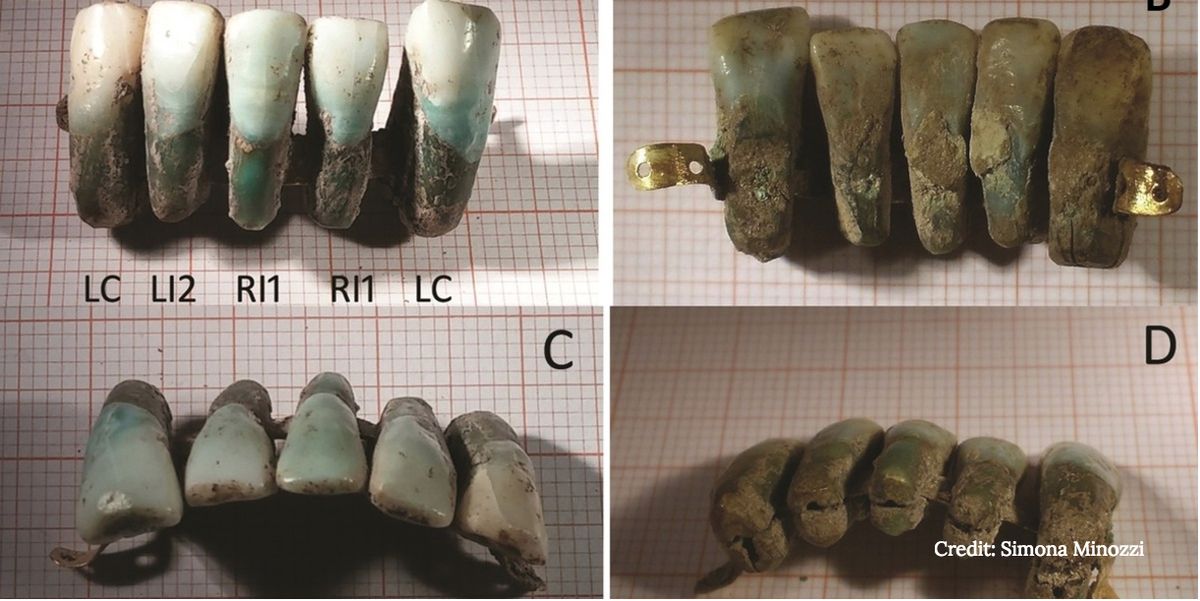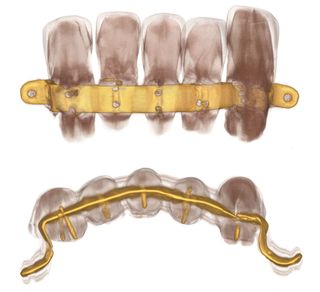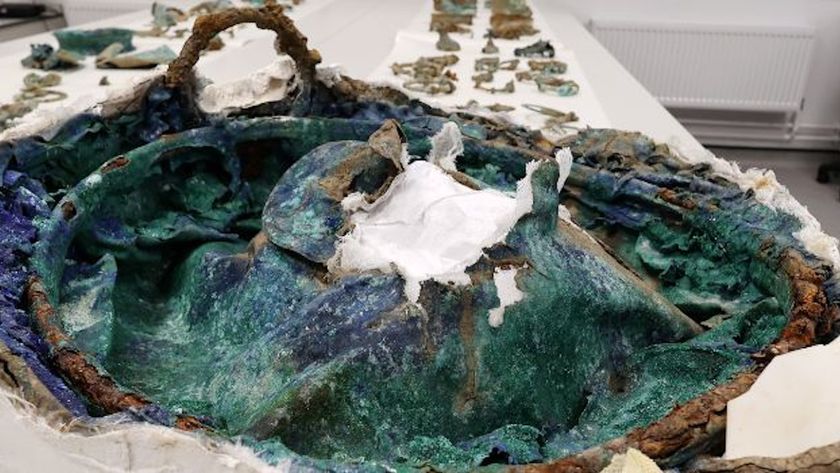400-Year-Old False Teeth Found in Italian Burial

Archaeologists excavating a monastery in the Tuscan town of Lucca have unearthed a unique 400-year-old dental prosthesis which appears to predate modern tooth bridges.
The appliance consists of five teeth — three central incisors and two lateral canines aligned in an incorrect anatomical sequence. Belonging to different individuals, the teeth were linked together by a golden band.
To build the prosthesis, the root apex of each tooth was removed and a longitudinal cut was made along the roots.
"The teeth were then aligned and a subtle golden lamina was inserted into the fissure," Simona Minozzi, Valentina Giuffra, at the division of paleopathology of Pisa University, and colleagues wrote in the Clinical Implant Dentistry and Related Research journal.
"Micro-CT scan revealed the presence of two small golden pins inserted into each tooth crossing the root and fixing the teeth to the internal gold band," the researchers said.
RELATED: Oldest Dentistry Found in 14,000-Year-Old Tooth
The prosthesis was anchored to the individual's teeth through two S-shaped ends featuring two small holes. Strings were probably used to hold it in place.
Sign up for the Live Science daily newsletter now
Get the world’s most fascinating discoveries delivered straight to your inbox.
Using a scanning electron microscope, the researchers found that the golden lamina is a metal alloy made of 73 percent of gold, 15.6 percent of silver and 11.4 percent of copper.
Appliances to hold loose teeth in place had been described by the innovative French surgeon Ambroise Paré (1510–1590) who served as royal surgeon for a number of French kings, and by Pierre Fauchard (1678–1761), who was widely considered the father of modern dentistry.
But until now, no direct evidence of such devices had been found.
"This is the first archaeological evidence of a dental prosthesis using gold band technology for the replacement of missing teeth," Minozzi told Discovery News.

She noted that the 16th and 17th-century descriptions of dental devices are similar to the appliances already used by the Etruscans more than 2,500 years ago.
"The golden prosthesis is much more complex because the gold lamina ran inside the dental roots and the teeth were blocked with golden pins," Minozzi said.
The prosthesis was found in the monastery of S. Francesco at Lucca, during excavations funded by the Fondazione Cassa di Risparmio of Lucca. Two large stone tombs contained the remains of the Guinigis, a powerful family who governed the city from 1392 until 1429.
Over the years, skeletal remains of successive burials accumulated in the tombs, so it wasn't possible to provide an accurate dating for the device.
"Some pottery fragments and devotional medals found in the same stratigraphic layer were dated to the beginning of the 17th century," the researchers said.
RELATED: The Iceman Could Have Used a Dentist
The prosthesis was found among the mingled remains of about 100 individuals.
"We couldn't find the corresponding jaw, so we do not know who the appliance belonged to," Minozzi said.
Minozzi and colleagues speculate the individual might have lost the teeth because of decay, gum infection or even age.
Indeed, the examination of the 100 skeletons in the tomb revealed that half of them were over 40 at the time of death — an advanced age for the time — and many suffered from tooth diseases.
"Among the aristocratic Guinigis, the presence of cavities, periodontitis and missing teeth was more than double compared to the Tuscan rural population," Minozzi said.
RELATED: First Known Teeth Belonged to Fierce Fish
According to dentist Umberto Pagliaro from Florence, the prosthesis is a unique example of technologically advanced dentistry.
"The idea recalls the modern Maryland bridge technique," Pagliaro told Discovery News.
Named after the University of Maryland, where it was developed in the late 1970s, this resin bonded bridge has two small "wings" on both sides which attach to the adjacent teeth on their posterior side.
We may not know who wore the device, but researchers are certain it was fully functional.
"Abundant calculus deposit on the teeth and the metal indicate it had been worn for a long period," Minozzi said.
Originally published on Seeker.













